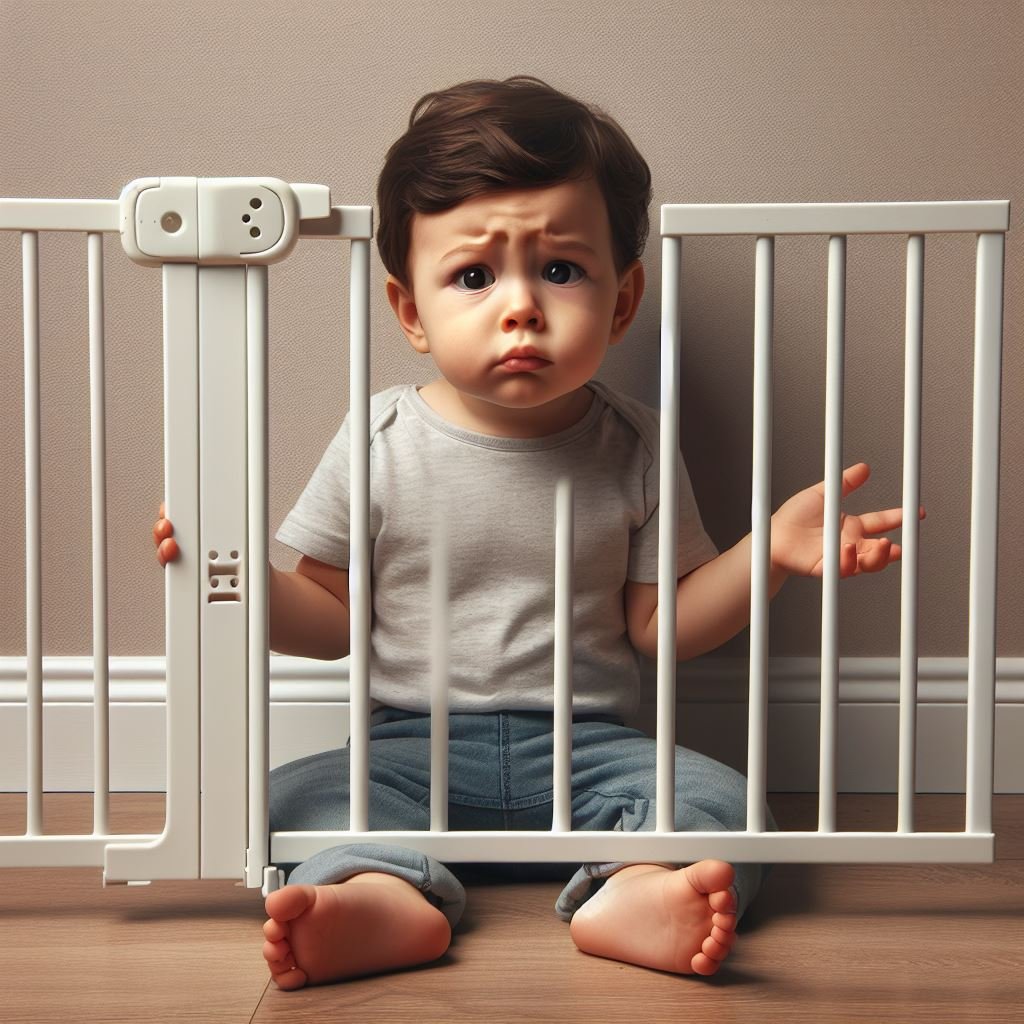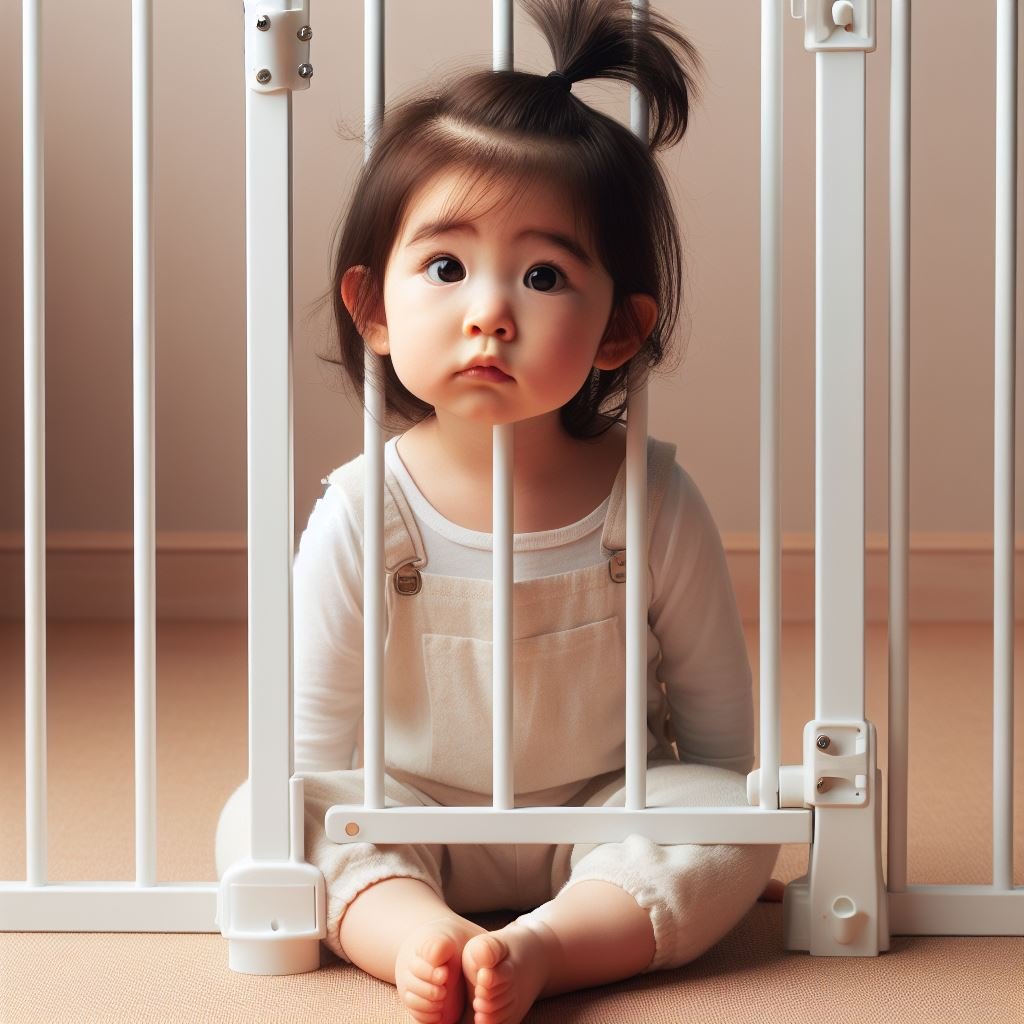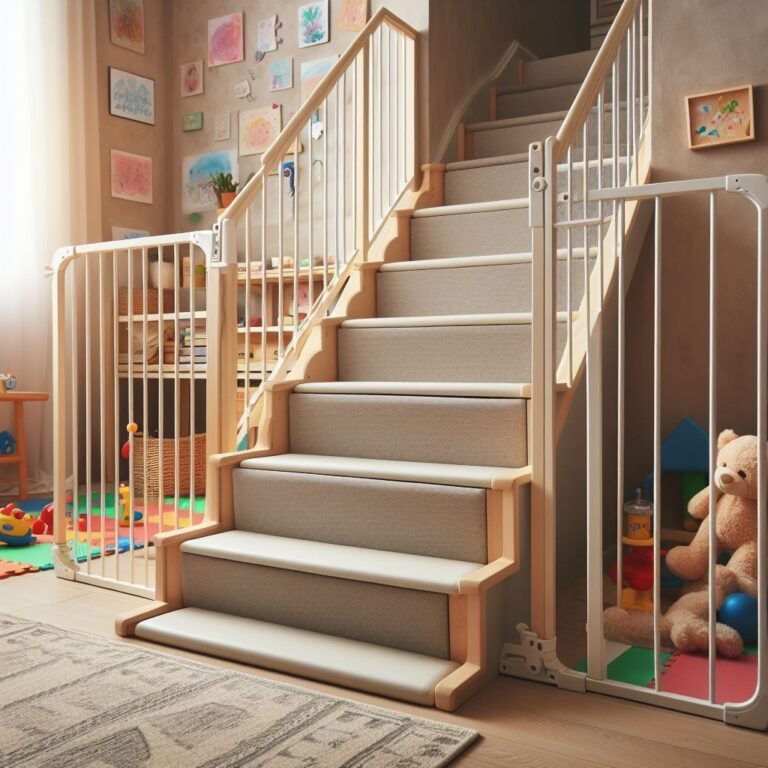Best Baby Gates Recommendation : How Long Do Baby Gates Last?
In a world where children’s safety is paramount, the durability of baby gates becomes a critical consideration. How long can we rely on these protective barriers?
This article delves into the average lifespan of baby gates, factors influencing their longevity, signs indicating the need for replacement, and useful tips for extending their lifespan.
Whether you’re a parent, caregiver, or someone serving the needs of others, understanding the longevity of baby gates is crucial in ensuring the safety of our little ones.
Key Takeaways
- Baby gates can last from 2 to 5 years.
- Factors such as quality, frequency of use, and environment can influence the lifespan of baby gates.
- Metal gates tend to be more durable than plastic or wood gates.
- Regular maintenance, inspection, and proper installation are crucial for extending the lifespan of baby gates.
The Average Lifespan of Baby Gates
One may wonder what the average lifespan of baby gates is and how long they typically last. Baby gates are essential safety devices that protect infants and toddlers from potential hazards in the home. The lifespan of a baby gate can vary depending on various factors, including the quality of the gate, frequency of use, and the environment in which it is installed.
On average, a well-made and properly maintained baby gate can last anywhere from 2 to 5 years. However, it is important to note that this estimate is only a general guideline, as the lifespan of a baby gate can be influenced by several factors. For instance, gates that are used frequently or in high-traffic areas may show signs of wear and tear more quickly.

The material used in the construction of the gate also plays a significant role in its durability. Metal gates tend to be more durable and long-lasting compared to gates made from plastic or wood. Additionally, the overall quality of the gate, including the strength of the locking mechanism and the sturdiness of the frame, can impact its lifespan.
To ensure the safety of your child, it is important to regularly inspect the gate for any signs of damage or wear. If you notice any issues, it is recommended to replace the gate promptly to maintain a secure environment for your little one.
Factors That Affect the Longevity of Baby Gates
While there are several factors that can affect the longevity of baby gates, one of the most significant factors is the quality of the gate’s construction. A well-constructed gate is more likely to withstand the wear and tear of daily use, ensuring a longer lifespan.
However, there are other factors that can also impact how long a baby gate will last. These include:
- Material: Baby gates made from durable materials such as metal or heavy-duty plastic are likely to last longer than those made from cheaper, flimsy materials. Investing in a gate made from high-quality materials will provide added durability and longevity.
- Installation: Proper installation is crucial for the longevity of a baby gate. Gates that are securely mounted to the wall or doorframe are less likely to become loose or wobbly over time. Following the manufacturer’s instructions and using the appropriate hardware for installation will help ensure the gate remains stable and functional for a longer period.
- Maintenance: Regular maintenance and inspection can significantly extend the lifespan of a baby gate. Cleaning the gate regularly, checking for any loose screws or hinges, and addressing any signs of wear and tear promptly will help keep the gate in good condition and prolong its lifespan.
Signs It’s Time to Replace Your Baby Gate
When the safety latch on your baby gate starts to malfunction, and you notice visible signs of wear and tear, it’s time to consider replacing it. As a caregiver or parent, your top priority is the safety and well-being of your little ones. Baby gates are essential tools to ensure that they stay out of harm’s way and prevent accidents. However, over time, these gates can become worn out and lose their effectiveness. It’s crucial to be aware of the signs that indicate it’s time for a replacement.

One clear sign that it’s time to replace your baby gate is when the safety latch no longer functions properly. The latch is designed to securely hold the gate in place, and if it becomes loose or fails to lock, it compromises the gate’s purpose. Additionally, if you notice any visible signs of wear and tear, such as cracks, bent bars, or frayed straps, it’s a clear indicator that the gate has reached the end of its lifespan.
Another sign that it’s time for a replacement is when your child starts to outgrow the gate. Baby gates are typically designed for specific age ranges and may not be suitable for older or more active children. If your child can easily climb over the gate or push it down, it’s time to invest in a new gate that can accommodate their growing needs.
Tips for Extending the Lifespan of Your Baby Gate
Implementing proper maintenance and care techniques can significantly prolong the lifespan of your baby gate. By following these tips, you can ensure that your baby gate remains sturdy and reliable for an extended period of time:
- Regular cleaning: Regularly clean your baby gate to remove dirt, dust, and debris that can accumulate over time. Use a mild detergent and a soft cloth or sponge to gently wipe down the gate. This will not only keep it looking clean but also prevent any buildup that could affect its functionality.
- Check for loose parts: Periodically inspect your baby gate for any loose parts or screws. Tighten them as necessary to maintain the gate’s stability. This will help prevent any accidents or injuries caused by a gate that is not securely fastened.
- Store properly when not in use: If you are not using your baby gate for an extended period, make sure to store it properly. Keep it in a dry and cool place, away from direct sunlight or moisture. This will help prevent any damage or deterioration that can occur over time.
Choosing the Right Baby Gate for Long-Term Use
In order to ensure long-term use of a baby gate, it is essential to carefully select the right gate that meets your specific needs and requirements. When choosing a baby gate for long-term use, it is important to consider factors such as durability, versatility, and safety features.
Durability is a key factor in selecting a baby gate that will last for the long term. Look for gates made from sturdy materials such as metal or wood, as they are less likely to wear and break over time. Additionally, gates with reinforced hinges and locking mechanisms are more likely to withstand the test of time.
Versatility is another important consideration when choosing a baby gate for long-term use. Look for gates that can be easily adjusted to fit different doorways and staircases, as this will allow you to move and install the gate in different areas of your home as your child grows.
Safety features should also be a top priority when selecting a baby gate for long-term use. Look for gates with features such as a secure latch system, a height that is appropriate for your child’s age and development, and smooth edges to prevent any potential injuries.
Frequently Asked Questions
Can Baby Gates Be Used for Pets as Well?
Baby gates can also be used for pets, as they serve the purpose of creating a safe and confined space. They provide a physical barrier to prevent pets from accessing certain areas, keeping them secure and protected.
Are There Any Safety Standards for Baby Gates?
There are safety standards for baby gates, which ensure their effectiveness in protecting children. These standards encompass factors such as height, size of openings, and durability. Compliance with these standards is crucial for the safety of young ones.
How Do I Clean and Maintain My Baby Gate?
To clean and maintain your baby gate, follow the manufacturer’s instructions for cleaning materials and methods. Regularly check for any signs of wear and tear, such as loose screws or damaged parts, and replace them as necessary to ensure continued safety and effectiveness.
Can Baby Gates Be Used at the Top of Stairs?
Baby gates can indeed be used at the top of stairs to ensure the safety of children. They are designed with features such as sturdy frames, secure latches, and hardware-mounted installations, providing peace of mind for parents and caregivers.
Are There Any Alternatives to Baby Gates for Childproofing?
There are several alternatives to baby gates for childproofing, such as door knob covers, cabinet locks, and window guards. These options provide effective safety measures and can be used in conjunction with or instead of baby gates.
Conclusion
In conclusion, the average lifespan of baby gates can vary depending on various factors, such as usage, quality, and maintenance. However, it is important to regularly check for signs of wear and tear and replace your baby gate if necessary to ensure the safety of your child.
By following proper maintenance practices and choosing a high-quality gate, you can extend its lifespan and provide a secure environment for your little one.
Remember, a well-maintained baby gate is a solid barrier between your child and potential hazards.




